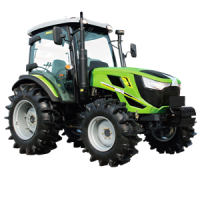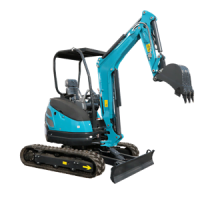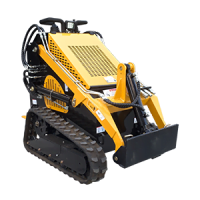Choosing the right mini excavator track is essential for enhancing the performance and efficiency of your equipment. This comprehensive guide will provide you with detailed insights and practical advice to help you make the best decision for your needs. We’ll cover everything from the types of tracks available to maintenance tips, ensuring you get the most out of your mini excavator.
Introduction

Mini excavators are versatile machines used in various construction, landscaping, and utility projects. The type of track you choose significantly impacts the excavator’s mobility, durability, and suitability for different environments. This guide will explore the key considerations when selecting mini excavator tracks, helping you optimize your machine’s performance.
Understanding Mini Excavator Tracks
Before diving into the specifics, it’s essential to understand the basics of mini excavator tracks. Tracks are crucial components that provide the necessary support and traction for mini excavators to operate across diverse terrains. They come in various materials and designs, each offering unique benefits and challenges.
Types of Tracks
- Rubber Tracks: Ideal for general use, offering smooth operation and minimal damage to surfaces.
- Steel Tracks: Best for harsh conditions, providing superior durability and traction.
- Hybrid Tracks: A combination of rubber and steel, offering a balance of performance and surface protection.
Track Treads and Patterns
Different tread patterns affect traction, wear rate, and operational stability. Common patterns include:
- Standard Block: Good for a variety of conditions.
- Turf: Designed to minimize ground damage.
- Mud & Snow: Provides better grip in soft, slippery conditions.
Selecting the Right Track
Choosing the right track involves considering several factors, including the type of terrain, the typical weather conditions, and the weight of the excavator. Here’s a detailed breakdown:
Terrain Type
- Soft and Muddy: Choose wider tracks with deep, aggressive treads.
- Rocky and Gravel-filled: Opt for steel tracks that resist punctures and tears.
- Landscaped Areas: Use turf-friendly tracks to prevent damage to grass and soft soils.
Weather Conditions
Tracks must be chosen based on climate variability:
- Cold and Snowy: Tracks designed for mud and snow can provide better control.
- Hot and Dry: Rubber tracks can withstand high temperatures without degrading quickly.
Excavator Weight
Heavier machines require stronger tracks that can handle the additional load without compromising lifespan or functionality.
Maintenance and Care for Your Tracks

Proper maintenance is crucial for extending the life of your mini excavator tracks. This section provides essential tips on keeping your tracks in top condition.
Daily Inspections
Check for any signs of wear, tears, or debris lodged in the tracks. Regular inspections can prevent minor issues from turning into major problems.
Cleaning Procedures
Clean the tracks after each use to remove dirt and debris, which can lead to premature wear.
Tension Adjustment
Proper track tension is critical. Over-tensioning can cause excessive wear, while under-tensioning might lead to track slippage.
Table: Track Comparison and Suitability
In the middle of our guide, let’s look at a comparative table that outlines the suitability of different track types across various conditions:
| Track Type | Terrain Suitability | Weather Resistance | Durability | Cost |
|---|---|---|---|---|
| Rubber | Landscaped, urban | Moderate | Medium | Low |
| Steel | Rocky, harsh | High | High | High |
| Hybrid | Mixed | High | High | Medium |
This table helps visualize which track might be best for specific conditions and budgets.
FAQ
Q: How often should I replace my mini excavator tracks?
A: Typically, tracks should be replaced every 1,200 to 1,600 hours of operation, but this can vary based on use and maintenance.
Q: Can I use rubber tracks on all types of terrain?
A: While rubber tracks are versatile, they may not perform well in extremely rough conditions where steel tracks would be more appropriate.
Q: Are there environmentally friendly track options?
A: Yes, some manufacturers offer eco-friendly tracks made from recycled materials, though they might come with different performance characteristics.
Conclusion
Selecting the right mini excavator track involves understanding your machine’s needs and the conditions it will operate in. By considering the factors outlined in this guide, you can enhance your excavator’s performance, extend its lifespan, and achieve better operational efficiency. Remember, the best track choice depends on your specific requirements, so evaluate your needs carefully before making a decision.
In conclusion, the right mini excavator track not only optimizes your machine’s functionality but also contributes to the overall success of your projects. Choose wisely, maintain regularly, and your tracks will serve you well across many jobs and conditions.





-1.png)